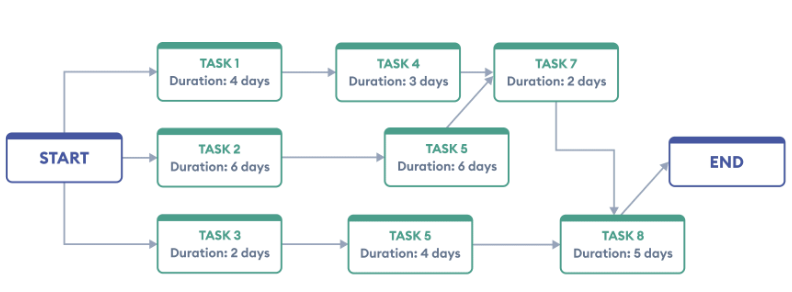The socioeconomic growth of society demands broadcasting services for effective transmission of communication within the community. Nonetheless, there are still geographical regions and populations that still need to be served by telecommunication services. Furthermore, there are access huddles even in areas with coverage, such as price and restricted access devices (Parker et al., 2021). The diverse national R&D systems have evolved due to the deregulation of the telecommunication services industry and escalating international competition. This study was conducted to evaluate the state of the broadcasting industry using metrics like inclusiveness, length and breadth of baseline activity, and effective hardware and software solutions.
Information contained in a Baseline Activity
A baseline study analyzes the existing conditions to establish the points at which a program or project should begin. It examines the data that must be considered and examined to produce a starting point, the standard by which future development may be evaluated or comparisons can be drawn. The baseline activity entails collecting field data and acquiring and analyzing information from already-existing sources. The information (secondary data) may come from databases, reports, or publications (Parker et al., 2021). Equally, fieldwork information, which includes monitoring and surveys, entails primary data and should also be included in baseline activity.
Scope and Duration of Baseline Activity
The initial amount of time anticipated to complete this research project is one month. Ultimately, a researcher’s project statement, specifications literature, the work plan, and the project planning statement dictionary, which compiles all the information about the work breakdown structure, make up a baseline activity.
Hardware and Software Tools for Baseline Activities
Performing a baseline activity is a complex undertaking with several intricate duties. An automated device or a computer with additional software is required to perform the baseline activity. Gantt charts and the Program Evaluation Review Techniques are the most often utilized baseline activity tools (Glukhov et al., 2018). The tasks required to finish a project are defined and managed using the planning and control technology known as PERT (as shown in figure 1). Critical Path Method charts and PERT charts are frequently used interchangeably. Both diagrams depict the overall project and all scheduled work chronologically (Parker et al., 2021). A CPM diagram or Project Network is a visual representation that shows the interrelationships between project components and the sequence in which tasks must be completed (as shown in figure 2).


Project Activity Component
The research activities include conducting a baseline survey, preparing the research budget, and analyzing data. The skills utilized in the research include; observation skills, computer literacy, programming languages, technical skills, social networking, and business software skills. In the research process, creative thought, analytical reasoning, and critical evaluation were all called upon (Glukhov et al., 2018). Additionally, prioritization, timekeeping, and active listening skills were also utilized in the research. Experience gathered from the project includes computer networking, interpersonal intelligence, cloud computing, structured cabling standards, and TCP/IP protocols gathered from the project.
The Procedure of Performing a Baseline Activity
The contents, such as data sheets and the resources required for the telecommunications project, are identified. This assists researchers in targeting specific sources, saving them time when they are subsequently looking for sources. A budget, timeline, objectives, and deadlines are then established using estimations of the project expenses. The next step involves writing a detailed timetable for the project’s phases, with deadlines and completion dates. As stated in “Procedures for Scoring Data Sheets,” the data sheets are then annotated accordingly (Glukhov et al., 2018). The final stage of the project research involves the researcher evaluating and analyzing the project’s progress.
References
Glukhov, V. V., Ilin, I. V., & Lepekhin, A. A. (2018). Towards business optimization and development of telecommunication companies: Tools analysis and their adaptation opportunities. In the Internet of Things, Smart Spaces, and Next Generation Networks and Systems (pp. 471-482). Springer, Cham.
Parker, E. B., Hudson, H. E., Dillman, D. A., Strover, S., & Williams, F. (2021). Electronic byways: State policies for rural development through telecommunications. Routledge.